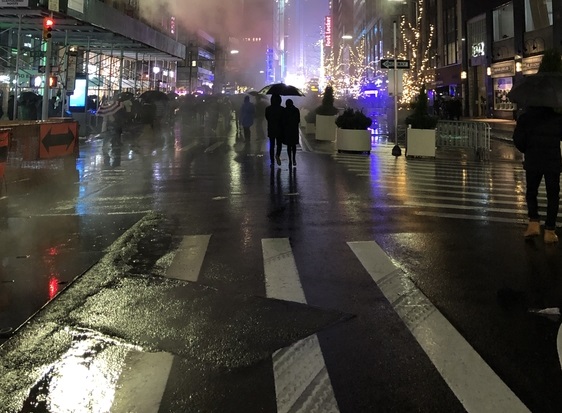
The Governors Highway Safety Association (GHSA) said that 6,590 pedestrian fatalities occurred in the US during 2019 - the highest number in more than 30 years. Richard Retting, author of GHSA’s Spotlight on Highway Safety report says: “Following 30 years of declining pedestrian fatalities, there has been a complete reversal of progress. Pedestrians are at an inherent disadvantage in collisions, and we must continue to take a broad approach to pedestrian safety.”
The report offers state and national trends in 2019 pedestrian traffic deaths based on preliminary data provided by state highway safety offices in all 50 US states and the District of Columbia.
The association adjusted data on pedestrian fatalities for the first six months of 2019 with historical trends to project a 5% increase in the number of people killed during the full 2019 calendar year. In 2018, 6,227 people on foot lost their lives in motor vehicle crashes.
GHSA says trends show that most pedestrian fatalities take place on local roads, at night and away from intersections - which suggests the need for safer road crossings and increased efforts to make pedestrians and vehicles more visible.
Night-time fatalities increased over the past 10 years by 67% compared to a 16% increase in daytime fatalities, the association adds.
Unsafe behaviour also plays a part in putting pedestrians at risk as the data shows that alcohol impairment by the driver or pedestrian was reported in nearly half of traffic crashes that resulted in pedestrian fatalities in 2018.
According to GHSA, pedestrian fatalities over the past decade involving SUVs increased at a faster rate of 81% compared to passenger cars, which jumped by 53%.
GHSA executive director Jonathan Adkins, says: “In the past 10 years, the number of passenger cars fatalities on our nation’s roadways has increased by more than 50%. This alarming trend signifies that we need to consider all the factors involved in this rise, identify the high-risk areas, allocate resources where they’re needed most, and continue to work with local law enforcement partners to address the chronic driver violations that contribute to pedestrian crashes.”
Despite these alarming figures, the number of all other traffic deaths has increased by only 2% over the last decade.
A projection of traffic fatalities carried out by the National Highway Traffic Safety Administration for the first half of 2019 shows an estimated 3.4% reduction in overall traffic fatalities compared to the first half of 2018
Taking positive action
GHSA says that Florida is taking positive action by carrying out a high-visibility campaign, which focuses on education and enforcement in areas with the highest representation of traffic crashes which result in serious and fatal injuries to pedestrians and cyclists. The Highway Safety Office and the Institute of Police Technology and Management at the University of North Florida are training officers through this effort.
A bicycle- and pedestrian-focused initiative called Alert Today Florida distributes educational materials based on the context of each community at risk. The material also provides information on new infrastructure and operational improvements as well as high-visibility enforcement efforts.
Meanwhile, the Delaware Office of Highway Safety is working with law enforcement agencies to target high pedestrian crash locations throughout the state. It has also partnered with Delaware Area Regional Transit to put street teams on buses to speak with customers on the importance of safe walking behaviours and distribute reflective items. Additionally, Delaware Department of Transportation is conducting pedestrian safety audits of high crash corridors to recommend possible engineering changes, which can include lighting changes, signal timings and pavement management.
Elsewhere, Washington, DC is carrying out public information campaigns and other education efforts along pedestrian corridors in low-income neighbourhoods in the District of Columbia. Pedestrian and vehicle enforcement teams focus on intersections, high-speed routes and around bars. Engineering changes include measures on reducing speeds along high risk routes for pedestrians, intersection improvements, restricting right and left turns at intersections and legislative changes to slow drivers around schools.












